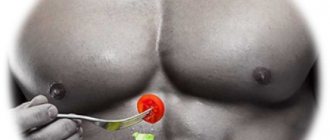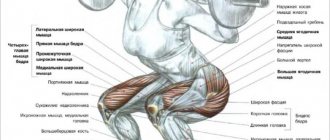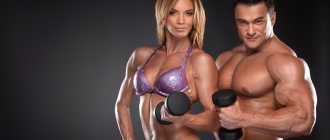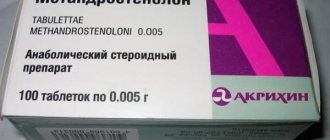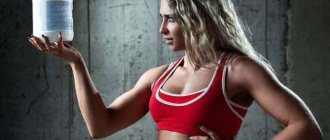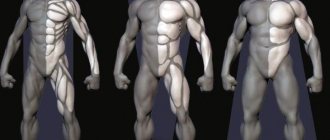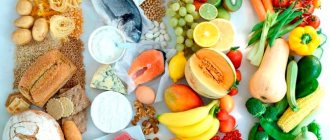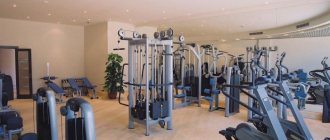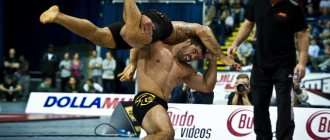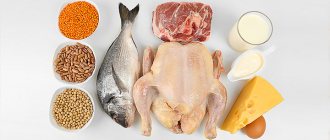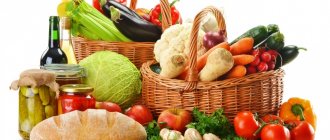Budget bodybuilding is one of the topics that interests us the most for those who want to eat properly and economically while doing bodybuilding. It is generally accepted that bodybuilding is a costly sport, and therefore only people with substantial income can engage in it. In fact, everything is far from true. Of course, if you dream of taking a place in the pantheon of bodybuilding idols, be prepared to shell out a considerable amount of money. You will have to invest in sports nutrition, fitness center memberships, home exercise equipment, expensive makeup for performances, and much more. But even this does not guarantee you victories at prestigious competitions and sponsorship contracts. If your goal is to build a harmoniously developed body, we will tell you how to effectively gain muscle mass without extra costs. In this article we will talk about the so-called budget bodybuilding.
Economical bodybuilding. How to eat properly and sparingly when doing bodybuilding?
The issue of nutrition for bodybuilding is one of the main ones. Therefore, it is very important to understand what works and what does not. There are several basic points, the observance of which will lead to very high efficiency.
Calorie content.
Your caloric intake should be excessive. This means that every day the number of kilocalories you consume should be more than you expend. Only under such conditions will you experience a gain in muscle mass and an increase in muscle strength.
The required proportion of nutrients - proteins, fats and carbohydrates.
Protein should be 2-3 grams per kilogram of weight. Typically, it turns out that about 30% of the calories you get should consist of protein, 10-15% should consist of fat, and the remaining 60% should come from carbohydrates.
The rate of food absorption, in particular the rate of protein absorption.
The fact is that different sources of amino acids have different rates of absorption and rise of amino acids in the blood. After training, it is important that the necessary substances quickly enter the bloodstream. And during sleep, you need them to get there more slowly, providing you with a regular rise in the level of amino acids in the blood.
The listed points: calorie content, nutrient proportions and protein absorption rate are three basic points that you should pay special attention to when planning and monitoring your nutrition for bodybuilding. If you follow these three basic rules every day, you don’t have to worry about your nutrition, it will be properly structured.
Now let's take a closer look at these three main points of nutrition for bodybuilding.
Budget diet for gaining muscle mass
The nutrition of any bodybuilder has its own specifics. Typically, professionals carefully control their menu and are selective about adding a certain product. Bodybuilding circles have already developed a list of the most commonly consumed products, the popularity of which is due to affordable prices, the optimal combination of chemical composition, nutritional value and digestibility.
List of basic products for muscle growth for a month:
- Chicken fillet – 3,320 rub.
- Eggs – 1,070 rub.
- Homemade grain cottage cheese – 3,250 rub.
- Pasta made from whole wheat varieties – 300 rubles.
- Oatmeal – 400 rub.
- Greens, vegetables and fruits (lettuce, cucumbers, tomatoes, banana) - RUB 3,350.
- Protein – 3,150 rub.
- Casein — 760 rub.
- Flaxseed oil - 280 rub.
- Broccoli – 1,450 rub.
- Grape vinegar - 450 rub.
Total food expenses for building muscle mass per month are: 17,780 rubles.
Calorie content
For anabolism (growth of muscle cells and tissues), excess calories are vital, that is, consuming more kilocalories than their consumption. This can be achieved in two ways. The first is buying a gainer, the second is an abundant and varied diet. Any beginner who buys a gainer will notice an increase in muscle mass and strength. The reason for this is a lack of experience in controlling your diet.
It may seem that a beginner eats a lot, but this is just an illusion. After all, if you do not count exactly how many kilocalories are consumed and how many are consumed, then it can easily turn out that the body does not receive enough calories. Therefore, to exceed your daily calorie intake by one or two thousand, you can buy a gainer. But for budget bodybuilding this is not always acceptable. And then you need to calculate the required calorie content of your diet and make sure that your diet contains a lot of complex carbohydrates, many meals.
Why is bodybuilder nutrition so important for gaining muscle mass?
To effectively grow muscles and increase strength, a bodybuilder's sports diet should consist of plentiful amounts of protein and calories, as well as trace elements and vitamins. For example, for visible muscle growth, an athlete must consume at least 2 g of protein per 1 kg of body weight per day. Carbohydrates are especially important, without which an actively training body will not have enough energy for effective recovery. Moreover, without getting the required amount of calories, the athlete will quickly get tired during weight training.
The more calories consumed, the higher the food costs. Protein-rich foods are especially expensive. Yes, and vitamin food has a hefty price tag. Even if you save on useless food (fast food, smoked foods, sweets, etc.), it is not always possible to provide the required level of nutrition for muscle growth. Prices for poultry, meat and fish will still remain high. Preparing a balanced and varied diet for weight gain every day will not only allow you to get the right amount of proteins, carbohydrates and vitamins, but also save money.
Proportions of essential nutrients
There should be 2 times more carbohydrates than proteins, that is, 60% carbohydrates, 30% proteins and 10% fats. Historically, our ancestors ate this way. Their diet was very high in grainy and fibrous plant foods, which provided them with carbohydrates. In addition, protein was present. Hunters brought game, fishermen brought fish. And at the same time, the diet of our ancestors had very little fat content.
Over the course of several thousand years, we have not changed much, but our metabolism has remained the same. However, in modern realities, people absorb nutrients in the following ratio: the predominant part belongs to fats, then come carbohydrates and the third leader is proteins.
As you can see, everything is mixed up. And our body reacts negatively to such nutrition. And for sports this is especially important, for example, bodybuilding requires additional portions of proteins for muscle growth and the proportion must definitely be changed.
How to solve this issue? You can buy various sports nutrition. You can also eat proteins from animal foods. First of all, these are meat, poultry, fish, dairy products, eggs, etc. Buying these products at markets, compared to buying sports nutrition, is a great way to save money.
Budget diet for a bodybuilder to gain muscle mass (RUB 4,445 per week)
People who have chosen bodybuilding know how expensive it is to visit a sports club. This includes not only the payment for a subscription, but also the costs of personal training with a trainer, visiting a solarium, bar, etc. Also, sportswear for training and additional accessories and equipment such as gloves or a powerlifting belt are not cheap. But the most significant blow to the pocket comes from the bodybuilder’s nutrition for gaining muscle mass.
High-quality amino acid nutrition profile and rate of amino acid absorption
Not all protein foods we eat are great for muscle growth. This is possible due to two main points. Firstly, the food may not have a very complete composition of amino acids. And for muscle growth you need certain amino acids.
The second point is the speed of assimilation. Some proteins are absorbed faster, some more slowly. The issue of amino acid quality can be resolved in two ways. You can buy expensive sports nutrition - amino acids and fast proteins. Or you can buy regular food products with a high-quality amino acid profile. A high-quality amino acid profile is found in animal products.
When you calculate your daily protein intake, you should not count plant sources of protein, you should only count animal sources. First of all, this is any meat, white and red, this is fish, these are dairy products such as cottage cheese, kefir, fermented baked milk, milk, yoghurts and, of course, eggs.
This is a basic list of foods that you should get the right amount of protein from every day. These products contain the required amount of essential amino acids. In particular, these products are very high in glutamine, lycine, isoleucine and valine. These are the amino acids that absolutely predominate in your muscle tissue and are especially needed if you engage in strength sports.
As for speed, everything is very simple. There are animal products that are digested very quickly and quickly raise the level of amino acids in the blood. And there are foods that are digested slowly and which are preferably consumed at night.
Let's do the math. Imagine that you decide to replace a foreign protein with a regular piece of meat. you are buying chicken breast. This is one of the most expensive sources of protein; there are significantly cheaper ones. Our chicken fillet costs about $2.5 per kilogram. The percentage of protein in it is about 20%. This means there are about 200 grams of protein in one kilogram. For $25, we can buy 10 kilograms of chicken fillet. It turns out two kilograms of pure animal protein, and of fairly high quality.
For example, we can buy some expensive protein source in a beautiful jar. On average, one two-kilogram can of protein will cost the same $25, but with a slight difference. Let's take, for example, the Dymatize Elite XT protein and in it we get 60 servings, 20 grams of protein in each, for a total of 1200 grams of protein. And for white meat, for the same money you would get 2000 grams. And if you buy chicken legs, which are 2 times cheaper than fillets, then you will get 4 times the protein! times more. This is a tangible way to save money on bodybuilding.
What other sources of protein can you recommend? It is worth paying attention to chicken, pork and beef offal, as well as fish, in particular pollock. Why offal? Because ventricles, hearts, and livers are sold at a fairly low price. At the same time, they have a high-quality amino acid profile, since in any case they are meat.
As for fish, pollock is a unique product, since pollock contains about 16-17 grams of protein for every 100 grams. It turns out that a kilogram of pollock is about 170 grams of animal protein with a good amino acid profile. At the same time, pollock contains less than one gram of fat per 100 grams. We buy a kilo of pollock for 2 bucks and get about 170 grams of high-quality amino acids without any fat. While a jar of amino acids in such quantities will cost 15-20 dollars. Naturally, if you do not have the opportunity to buy amino acids, then it is better to pay attention to pollock. Its only drawback is its rather bland taste if it is not seasoned with salt and spices. However, you save a significant amount of money on getting much-needed amino acids for bodybuilding.
Next we have dairy products. Compared to sports nutrition, milk has fairly affordable prices. For example, cottage cheese is a very worthy alternative to casein protein. This is the protein that is usually drunk at night to ensure a long journey of amino acids in your blood while you sleep, so that there are the necessary sources of building material for your muscles. Cottage cheese takes a very long time to digest and gradually raises the level of amino acids in the blood, so it is an ideal product to consume before bed.
The next product that I would like to pay attention to is eggs. The biological value of egg protein is taken as 100%, that is, the egg is the standard in protein value for products of animal origin. And here are two more very important points.
First, egg protein digests very quickly, so eggs are great for quickly raising amino acid levels after a workout.
The second point is that there is frequent advice to separate the yolk and white, since the former contains a large amount of cholesterol. It is a myth. When you take the yolk out of the white, you lose half the protein, and one egg contains on average 5-6 grams of protein, respectively, 3 grams in the white, 3 grams in the yolk. Yolk plus white provides a higher-quality composition of amino acids without losing the biological value of this product and obtaining a balanced set of amino acids, namely: lycine, isoleucine, valine and glutamine.
Regarding cholesterol, this is a very old misconception. Cholesterol from food has nothing to do with the cholesterol in your blood because the cholesterol you eat is broken down by enzymes in your liver and other organs as it passes through your digestive tract. So eat eggs like our ancestors did.
For budget bodybuilding, all of the listed food products are very important and allow you to save a lot.
The best sources of carbohydrates are various cereals, such as rice and buckwheat - this is something that will be absorbed gradually. If you need to quickly increase your carbohydrate levels, we recommend using foods that have a higher glycemic index. These include: pasta, baked goods and oatmeal. If you need to instantly increase the level of carbohydrates in your blood, then you need to eat honey, sugar or chocolate.
Are there any sports supplements that cannot be replaced? Yes, they are. These include creatine. This is due to the fact that to obtain the required amount of creatine, you will need to eat 3-4 kg of red meat every day. So it's up to you.
If you are used to drinking cocktails and cannot live without using liquid supplements, baby food. As a rule, it contains a very good carbohydrate content and a moderate amount of essential proteins, which is comparable to a ready-made gainer, only several times cheaper. If you are still a beginner bodybuilder and have not reached such twists, then I will simply advise you to drink two liters of milk a day, which will give about 60 grams of additional protein. Therefore, if you don’t know where to start, then start drinking 2 liters of milk or eating 400 grams of cottage cheese daily.
About the diet
So, you have come to the realization that you are not entirely happy with your body - you need to gain some, this muscle group is lagging behind, or your appearance leaves much to be desired, and it would be nice to increase the “meat”.
Congratulations - this is already a good start! The goal has been set, and the way out is to gain muscle mass.
But here’s the problem: there isn’t much money. But you want a lot... However, you shouldn’t immediately lose heart and doom yourself to be a scumbag forever and ever. There is always an interchangeable alternative, which will be discussed in this nutrition program.
Main components of weight gain:
- Eating for a calorie surplus (that is, more calories should be received than consumed during the day). Preference should be given to complex carbohydrates (buckwheat is the boss of everything!), meat (beef, breast) and fish, dairy products (cottage cheese!), bananas and vegetables.
- Well-designed training process. The number of repetitions should be 8-12 (read more here). Also, don’t forget about periodization of loads (you can’t work only to increase weight all the time!). To do this, you can take a couple of personal training sessions (especially important if you are new to the gym and have not completely mastered the exercise technique - this will reduce the risk of injury, instead of the desired result).
- You should pay attention to nutrition before and after training (you need to eat immediately after the training session)
- Meals at night - the best option would be to eat cottage cheese, as it contains 50% casein proteins, which will provide nutrition to the muscles for a longer time (that is, while you are regaining your strength)
- Recovery and regimen.
- Water balance. Sufficient intake of water in the body will have a positive effect on muscle mass gain.
If you are also an ectomorph, then you need to remember that:
- Gaining muscle mass can be slow, so be patient. And food. A lot of food.
- You should eat often, and you should not allow yourself to feel hungry.
- A specific training scheme (training time should not exceed 60 minutes, number of repetitions 6-8)
- You should categorically refuse cardio exercises (You don’t want to “waste” the necessary calories?)
- And it’s better not to be nervous, to avoid stressful situations as much as possible. Otherwise, there will be an increased production of the stress hormone - cortisol and all efforts, roughly speaking, will be down the drain.
Now let's look specifically at nutrition. So, what products will make up the “basic” set in a crisis?
- Buckwheat, pearl barley, rice, oatmeal, pasta
- Chicken breast, thighs
- Eggs
- Cottage cheese, milk, kefir, Russian cheese
- Bananas
- Broccoli, green beans (as a source of fiber)
As you can see, all products are available and inexpensive. We will look at diet options below.
As for sports nutrition, it is worth noting that this is not at all a necessity. The same protein or gainer is used as a dietary supplement (!) to the main diet in case of a lack of any nutrients or calories. Therefore, spending on sports nutrition is not always necessary.
Budget nutrition for gaining muscle mass
Recently, the cult of a pumped up, physically developed body has become very popular. Creatures of indeterminate gender with a delicate appearance and a youthful voice are becoming a thing of the past, anorexic young ladies are becoming less and less common, and so-called “jocks” and “fit girls”—people with a beautiful, athletic physique—are increasingly appearing on the streets. Naturally, you won’t achieve this result with just sports; nutrition plays an important role here. That's what we'll talk about.
What do bodybuilders eat?
Translated from English, bodybuilding literally means “building the body.” You need to build it correctly, by building muscle mass. To grow muscles, you need to regularly do strength training. But this is not enough, you need to change your diet. Initially, the percentage distribution of proteins, fats and carbohydrates is 30-20-50%, respectively. These proportions are designed for people leading a normal lifestyle and not pursuing the goal of intensive muscle mass gain. If it is necessary to build muscle in large quantities, the diet shifts towards proteins and they can account for up to 60% of all food intake. Fats will also be 20%, and carbohydrates will also be reduced to 20%.
Meat is considered the main source of protein. It’s worth mentioning right away that we will be talking exclusively about traditional food products, without protein supplements and cocktails. Also, fish, low-fat cottage cheese, and egg whites are used in food to obtain protein. Naturally, the cost of a diet when gaining weight will not be affordable for everyone if you gain proteins only from animal products. For example, to get 200 grams of pure protein, you will have to eat about a kilogram of boiled chicken breast. Taking into account weight loss, you will need almost one and a half kilograms of raw product. If you take frozen chicken, then perhaps even more.
In addition, you need to ensure the supply of high-quality carbohydrates so that you have enough energy for strength exercises. It turns out that to get pumped up arms and other parts of the body you need to spend a lot - you will have to buy 45 kg of one chicken breast. Replacing some with fish won’t be much cheaper either. But are there nutrition options that allow you to save money without damaging your body and business at the “mass” stage.
Alternative Protein Sources
It turns out that there are many more sources of proteins in nature than might seem at first glance. Below are the main sources of protein among cheap, medium and moderately expensive products (amounts indicated per 100 grams of product):
- Boiled chicken breast – 20 g;
- Medium fat cottage cheese – 18 g;
- Whole chicken egg – 13 g;
- Canned white beans – 8.9 g;
- Walnut – 15 g;
- Cashew nut – 18 g;
- Boiled chickpeas – 8.3 g;
- Split peas (cereals) – 20.5 g.
This list goes on and on. I would like to immediately warn that protein shakes (even the cheapest ones) are not included here, since their protein is less digestible and problems in the functioning of the digestive system may occur.
As for carbohydrates, everything is much simpler with them - porridge has always been inexpensive. Buckwheat should be a favorite – it has the highest protein content. But you also can’t give up oatmeal, pearl barley, millet and wheat. Many people mistakenly believe that it doesn’t matter what kind of carbohydrates they have - complex or simple - and begin to gobble up buns and loaves with appetite. In fact, complex carbohydrates should dominate, or better yet, lead the way, making it possible to withstand strength training and build muscle. Protein here acts as the building blocks, and carbohydrates act as the driving force. If it is noticed that there is no progress, the working weight is not increasing, then you need to add more carbohydrates (it is important not to forget about the proportions). If body weight grows, but working weight does not increase, then it means that fat is being added, not muscle, and carbohydrates need to be reduced.
Everything is good in moderation
But everywhere you need to maintain a balance. It is impossible to turn a wimp into Hercules in a month, even if you feed him a whole turkey without skin every day. The desire to obtain quick results pushes novice athletes to use special pharmaceutical products that provoke increased muscle growth, but their benefits are questionable, and the potential harm to the body, especially hormonal levels, is quite great. In such an important and complex process as the formation of a beautiful body, you need to be patient and consistent, alternating periods of gaining weight with stages of drying. Drying is needed to remove fat, which inevitably accumulates on the mass, and to emphasize the accumulated relief. Following the correct technology for shaping an athletic body will allow you to achieve your goal without harm to health and unnecessary financial costs.
Bakery
Yeast baking is very inexpensive. Large pies are much easier than many small pies. The pies can be baked for future use - they are excellent cold, but they can also be reheated. Any fillings - boiled meat, raw fish, fresh or pickled cabbage, mushrooms, potatoes, cheese.
Open pies - with berries, apples, nuts and anything else you have on hand. Cheesecakes - with cottage cheese, shanezhki - with mashed potatoes.
Just loaf-type bread, with seasonings and toppings (cheese, onions, flaxseeds, sesame seeds, cumin), with the addition of corn, buckwheat, rye flour.
Chopped dough is very quick, it can be prepared for future use and kept in the freezer/refrigerator. Pies, such as quiche (aka Lorraine pie). Options - with fresh vegetables (tomatoes, sweet paprika) plus herbs, cheese. Sweet - with berries (cherries, strawberries, blueberries, lingonberries), with apples, peaches, apricots, or dried fruits.
Shortbread dough (like chopped dough, only even simpler) - for children's cookies and sweet pies; children themselves love to bake with this dough, it is not complicated.
Noodle dough - noodles, brushwood, dumplings and much more.
The total amount of the basic basket of the economy pp menu will be approximately 4,590 rubles.
Of course, you will have some other related expenses, but you have already collected the necessary basic basket, and therefore the expenses will be insignificant.
https://youtu.be/iER0YnodeqQ
As you can see, proper nutrition is not such an expensive pleasure, and you can always think of a budget menu. The main rule is to plan your menu in advance so that you know exactly which products you need and which ones you shouldn’t spend extra money on. Do you practice proper nutrition and stick to a budget-friendly menu? Be sure to share your secrets and recipes!
Published 11 Aug 2020 12:47 © Women's share
Switching to proper nutrition is associated with huge financial costs - this is what most people mistakenly believe. It seems that it is more economical to stick to your usual diet. But healthy products don’t have to be expensive, the main thing is to choose the right menu.
Menu for muscle growth
Breakfast:
- 3 boiled eggs + 3 egg whites
- 150g dry oatmeal
- 1st Art. l. flax oil
Lunch:
- 250g homemade grain cottage cheese.
- 250g boiled chicken fillet
- 100g pasta
- Salad with tomato and cucumber.
Before training:
After training:
- 200g boiled chicken fillet
- 300g broccoli
- Salad with cucumber, tomato, 100g lettuce and a couple of tbsp. l. grape vinegar.
Late dinner:
- 250g homemade grain cottage cheese.
The proposed diet for muscle growth is designed for the average athlete weighing about 80 kg body weight. The calorie content of this nutritional system is 2,960 kcal, which includes: 3g of protein, 4g of carbohydrates and 1g of fat per 1kg of body weight.
Do not forget about the need to take multivitamins and drink at least 2 liters of water per day. Fiber, which is abundant in green vegetables, is also important for an athlete’s developing body. Carbohydrates in the form of oatmeal and pasta can be replaced with wild rice or buckwheat.
Also on our website you can familiarize yourself with the nutrition program for gaining weight for girls. More details at the link.
